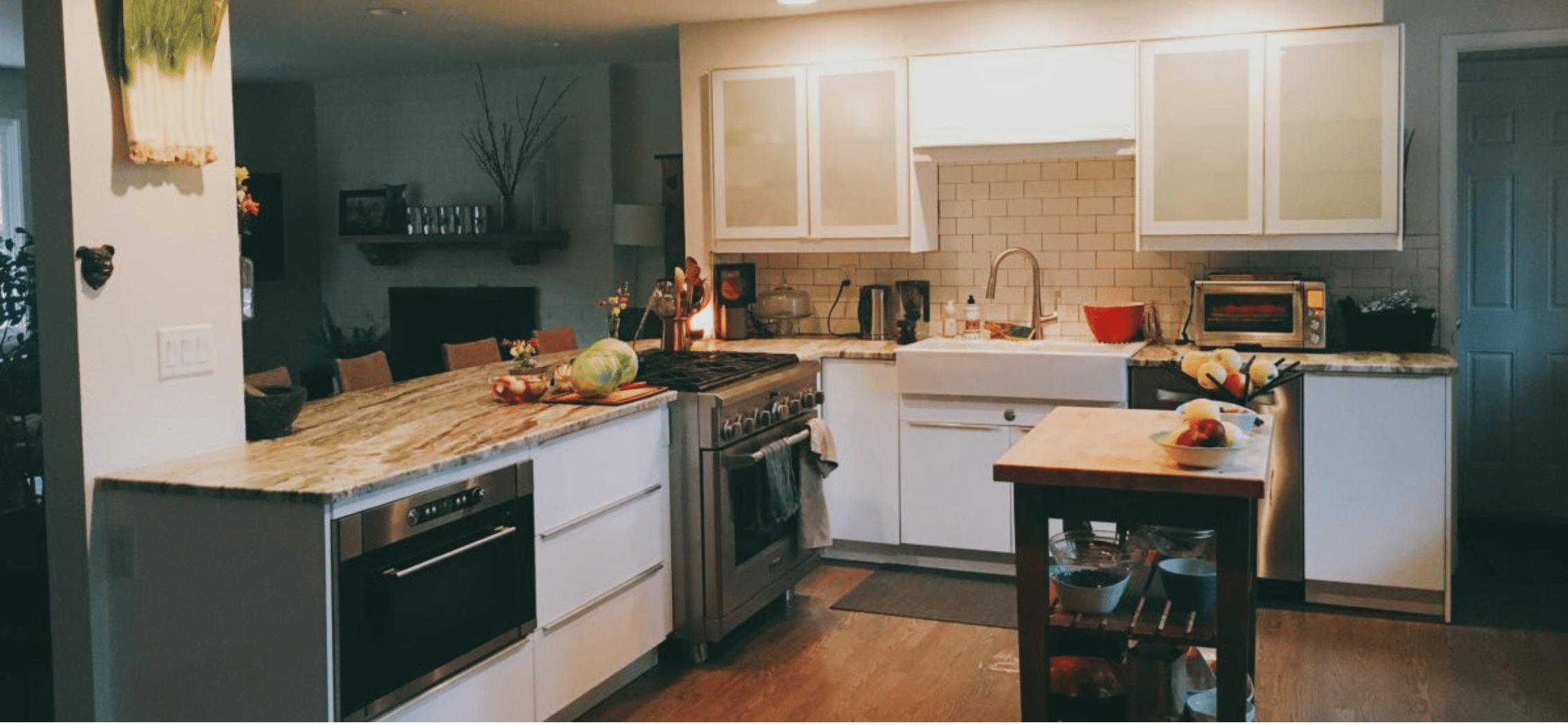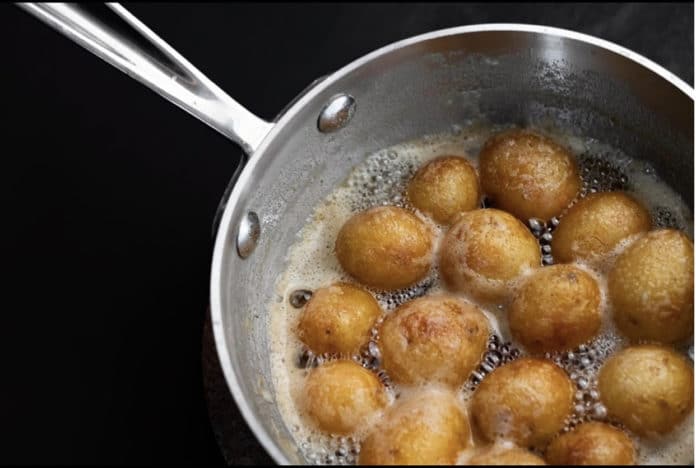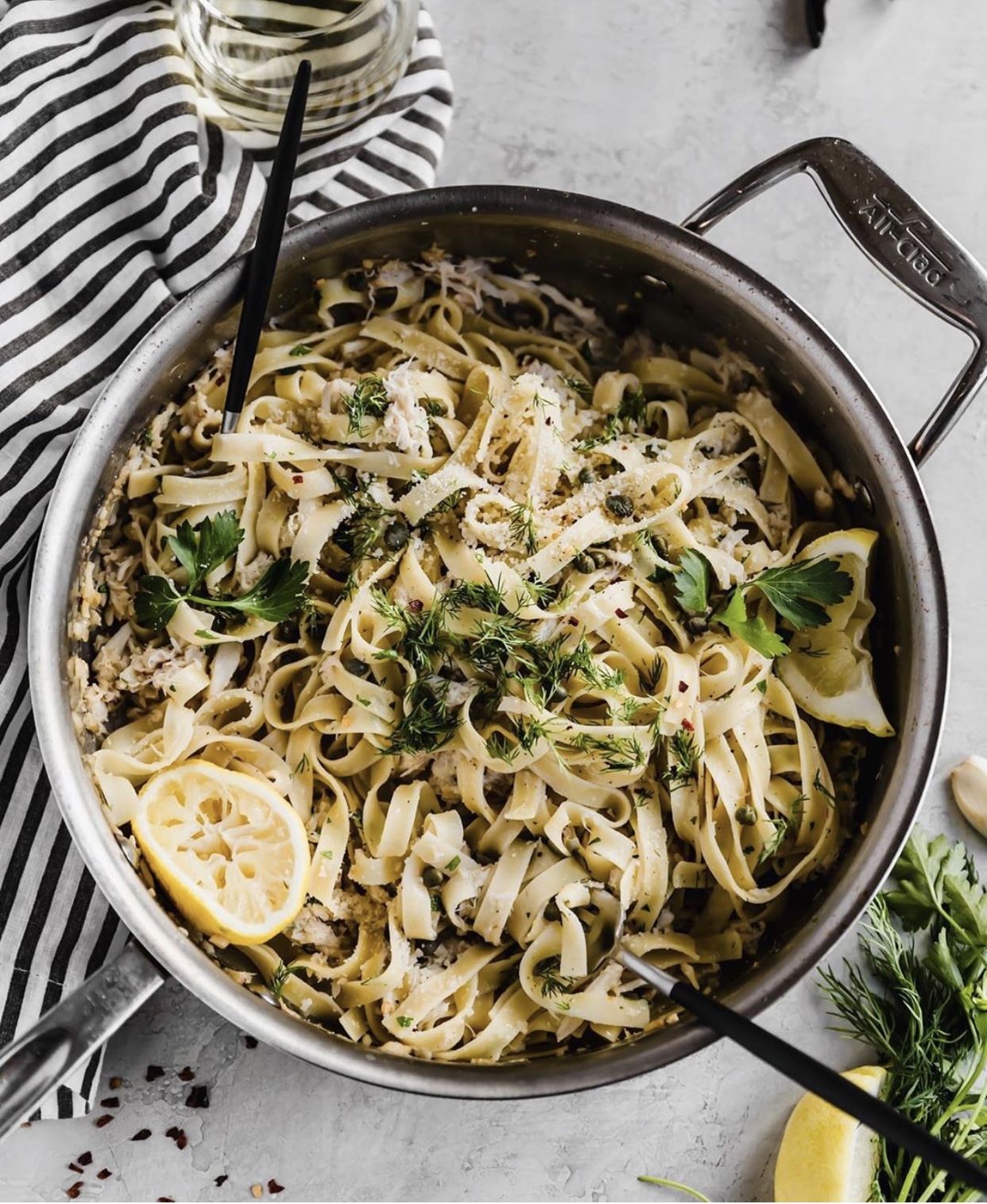Long, long before COVID-19, or as I refer to it BC (Before Corona), I began thinking about writing this article. It’s not meant to tell people what to do, but rather just a document that captures how I cook. It’s basically my guiding rules, equipment, and inspiration.
Since I became a vegetarian at age 14, all that has really motivated me is food. When I graduated from college I wanted to go to culinary school, but the thought of “breaking down” a pig or other animal was so repulsive that I gave up that dream. I toyed with the two options available in 1991: Moosewood or the Natural Cookery School in NYC, but neither spoke to me. Instead I became an avid home cook who lives to cook and, subsequently, eat.

GENERAL STUFF…
- Most every Saturday morning, I look at the coming week to see evening commitments, travel, the forecast (if it’s rainy and cold: soup, etc.) and then plot my menu. Usually I get out favorite cookbooks, food magazines, and/or scroll through recipe sites online. I scribble down ideas and have a sense of what meals I’d like to cook before going to the farmers’ market or, in the off-season, the grocery store. If something looks amazing at the market, I pick it up and adjust the menu. Weekly menu planning accomplishes a couple of things: keeps us on budget, reduces food waste (I try to calculate in leftovers or repurposing food from one meal to another), prevents extra trips/time to the grocery store during the week, and ultimately allows me to try new dishes because I make the time prior to gather ingredients and plot out the time to make.
- I also try to make one new dish a week. It doesn’t always happen, but it is a goal.
- I subscribe to an app called, Anylist. It’s essentially an online grocery store list that everyone in the family can access. I have lists for everything: farmers’ market, spice store, Indian grocery store, Whole Foods, Sprouts, Asian grocery store, hardware store, etc. It’s enormously helpful.
- Favorite food publications: Milk Street, Food & Wine and online: the New York Times Cooking section and Smitten Kitchen.
FOOD STUFF…
I mostly try to cook everything from scratch, even things like:
- Plant-based butter spread
- Nut cheese
- Oat and almond milk
- Tempeh
- Granola
- Sourdough bread
OTHER STUFF…
- I buy my salt in 25 lb units from Redmond Real Salt in Utah. Bonus: no microplastics from the ocean and supports an American business. After I receive the salt I store it in 1 quart jars.
- Spices are purchased at Savory Spice or my local Indian grocery store
- Beans, nuts, soy sauce, sesame oil, olive oil…all either purchased in bulk locally or at Thrive Market.
- It goes without saying that I always try, when given the option, to buy organic.
TIPS FOR OUTFITTING YOUR KITCHEN (MAINLY INTENDED FOR MY GIRLS, BUT MIGHT BE USEFUL FOR OTHERS)
When you first start out in life on your own, buy a set of really, really good silverware. Nothing is worse than eating your homemade, beautiful food on cheap, tinny, crappy silverware. If you take care of it, you will only need one set for your entire life.
Same goes for dishes. It’s tempting to buy cheap, colorful, trendy dishes, but more than likely you will get really tired of them quickly and/or they will chip easily. I love white porcelain plates. Yes, white can be boring, but they are so versatile and you can always get accent pieces or make your table beautiful with gorgeous linens and flowers.
Buy three high quality knives: a paring knife, bread knife and a chef’s knife. Again, if you invest in quality, you will never have to buy more.
Don’t get hooked into buying a “set” of fancy pots and pans. Instead, invest in high quality pans from different places. You don’t really need many. I’ll never forget the Christmas when I was 22, my mom gave me the only thing I asked for that year: one Le Creuset lasagna pan and a small soup pot. I still have them and use them frequently.
EQUIPMENT BASICS:
- One 12-inch cast-iron Lodge skillet that I cook everything from pancakes, mushrooms, hash browns, Dutch Baby, corn tortillas, even paella, etc.
- An All-Clad tall-slope sided, weeknight pan that I use for curries, pasta, etc.
- A wok
- A 4-quart Le Creuset pot
- A 9-quart Staub Cast-Iron Round Dutch Oven for making soup, stews and cooking sourdough bread.
MISCELLANEOUS EQUIPMENT:
- A decent set of measuring cups and spoons.
- Colanders: one large, one small and one with a handle.
- A couple sets of glass or pottery bowls.
- A good whisk, wooden spoons and spatula.
- An immersion blender.
- A Kitchen Aid stand mixer.
- A Cuisinart Food Processor.
- Cutting boards – I gave up using all wooden cutting boards a few years ago and transitioned to Epicurean cutting boards that are eco-friendly, dishwasher safe, thin, knife friendly, etc.
- Instant Pot — I use it almost every other day for rice, beans, quinoa, soup, curries, etc., and I seriously can’t imagine life without it now.
- I threw away every plastic container years ago and have slowly acquired all glass containers (Snapware) to store food – Ball jars and Tupperware-like containers that are all glass with only hard plastic lids.
- One 8-inch ceramic non-stick pan like Greenpan.
Sourdough bread baked in Staub Dutch Oven.
INDULGENCES:
- Pasta pot with removable colander
- Stainless steel Whirly Pop popcorn popper
- Breville electric tea kettle
- Breville small convection oven (we use this for everything: toast, cookies, roasted veggies, bread, pizza, etc.)
- Excalibur dehydrator (for preserving fruit and veggies at the height of season)
WILDEST AND BIGGEST INDULGENCE:
- Jura coffee maker (yes, crazy pricey, but we did get the least expensive model)
NON-NEGOTIABLE:
- Cloth napkins
- Beeswax Candles — lit for every breakfast and dinner
- Fresh flowers weekly — from our garden or store
- Being a member of a Community Supported Agriculture (CSA) or commitment to your local farmers’ market for majority of your food.



